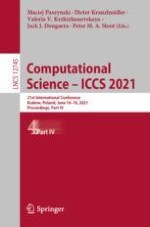2021 | OriginalPaper | Chapter
Two Stage Approach to Optimize Electricity Contract Capacity Problem for Commercial Customers
Authors : Rafik Nafkha, Tomasz Ząbkowski, Krzysztof Gajowniczek
Published in: Computational Science – ICCS 2021
Publisher: Springer International Publishing
Activate our intelligent search to find suitable subject content or patents.
Select sections of text to find matching patents with Artificial Intelligence. powered by
Select sections of text to find additional relevant content using AI-assisted search. powered by
